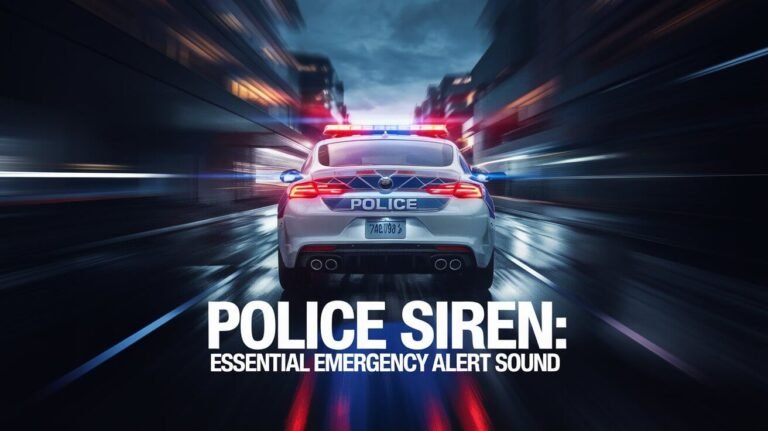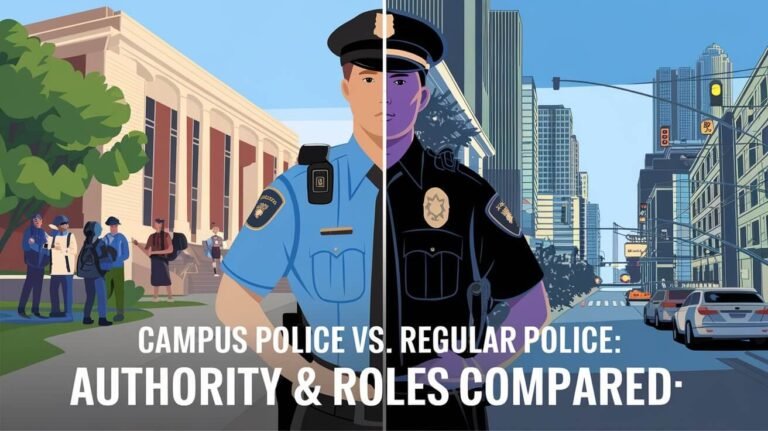Police Officer Weapons & Equipment Guide: Standard Issue Gear

Police officers carry a range of weapons and equipment to protect both themselves and their communities. From standard firearms to non-lethal options, modern law enforcement relies on various tools to maintain public safety.
Standard Police Firearms
The most common police sidearm today is the semi-automatic pistol. Glock dominates the market, with the Glock 17 and Glock 19 leading department choices nationwide. The Glock 22 in .40 S&W remains particularly popular among American law enforcement agencies.
Many departments now equip their officers with optics-ready pistols. These modern handguns feature slides cut for red dot sights and tactical lights. Night sights come standard on most police pistols, improving accuracy in low-light conditions.
The FBI currently issues the Glock 19M as their primary sidearm. LAPD officers carry the FN 509 MRD-LE or Smith & Wesson M&P. The NYPD issues the Glock 17 Gen 4 with special 15-round magazines.
Department-Issued Long Guns
Most police departments equip patrol cars with:
- AR-15 style rifles
- Pump-action or semi-automatic shotguns
- Less-lethal shotguns for bean bag rounds
The Remington 870 and Benelli M4 Super 90 remain popular police shotgun choices. For rifles, departments often select Smith & Wesson, Colt, or Bushmaster AR-15 variants.
Non-Lethal Police Weapons
Law enforcement officers carry multiple non-lethal options to handle situations without deadly force. These tools help control suspects while minimizing injury risks.
Electric Control Devices
TASER devices lead the electric control category. These tools fire two barbed projectiles that deliver an incapacitating electric charge. Unlike contact stun guns, TASERs work from a distance.
Police favor TASERs because they:
- Stop threats from a safe distance
- Cause temporary incapacitation
- Reduce injury risks compared to impact weapons
- Work through thick clothing
Chemical Agents and Sprays
Pepper spray remains standard equipment for most officers. Modern formulas use capsicum oleoresin (OC) derived from hot peppers. OC spray offers several advantages:
- Non-vaporizing formula
- Minimal cross-contamination risk
- Effective temporary incapacitation
- Works on aggressive subjects
For crowd control, police may deploy tear gas through:
- Handheld grenades
- Shotgun rounds
- Grenade launchers
Impact Weapons
Police batons have evolved from simple wooden nightsticks. Modern versions include:
- Straight batons (12-36 inches)
- Side-handle batons
- Expandable/collapsible batons
- Composite material construction
Some advanced batons incorporate:
- Built-in flashlights
- Electric charge capability
- Control grip surfaces
- Special impact surfaces
Police Protective Equipment
Modern officers carry more protective gear than ever before. This equipment keeps them safe during dangerous situations.
Body Armor
Bulletproof vests are essential police equipment. Most use Kevlar fiber technology that:
- Stops handgun rounds
- Blocks knife attacks
- Allows freedom of movement
- Can be worn under uniforms
Special units may use enhanced ceramic plate carriers that protect against rifle fire. Bomb disposal teams employ even heavier armor suits.
Duty Belt Equipment
Standard police duty belts hold:
- Primary handgun
- Spare ammunition magazines
- Handcuffs (metal and plastic)
- Radio holder
- OC spray holder
- Expandable baton
- TASER holster
- Latex glove pouch
- Key clips
Additional Protective Gear
Officers also carry:
- First aid kits
- Tactical gloves
- Flashlights
- Body cameras
- Radio microphones
Police Weapon Policies
Departments strictly control what weapons officers can carry. Most agencies require regular qualification and training with all authorized weapons.
Standard Issue vs Personal Weapons
Some departments issue standard weapons to all officers. Others allow officers to purchase approved firearms from a list. Common requirements include:
- Specific calibers (.9mm, .40 S&W, .45 ACP)
- Minimum magazine capacity
- Required safety features
- Approved manufacturers
- Regular inspections
International Police Weapons
Police weapon policies vary greatly worldwide. Some key differences:
Armed Forces:
- United States – Standard armed police
- United Kingdom – Primarily unarmed (except Northern Ireland)
- New Zealand – Armed response units only
- Norway – Firearms require chief approval
Military Police Forces:
- Common in developing nations
- Often carry automatic weapons
- Higher incident rates
- Less restrictive policies
Modern Police Weapon Trends
Police weapons continue evolving with new technology. Current trends include:
Optics and Accessories
More departments now authorize:
- Red dot sights
- Weapon-mounted lights
- Enhanced night sights
- Modular rail systems
Caliber Changes
Many departments are switching back to 9mm from .40 S&W due to:
- Improved ammunition technology
- Better recoil control
- Higher capacity magazines
- Lower ammunition costs
Advanced Non-Lethal Options
New less-lethal weapons include:
- PepperBall systems
- Sonic devices
- Light-based disruptors
- Advanced TASERs
Police K-9 Units
Police dogs serve as important law enforcement tools. Common breeds include:
- German Shepherds
- Belgian Malinois
- Bloodhounds
- Labrador Retrievers
K-9 Applications
Police dogs assist with:
- Suspect apprehension
- Drug detection
- Explosive detection
- Missing person searches
- Evidence recovery
Specialized Police Equipment
SWAT and tactical units carry enhanced gear:
- Automatic weapons
- Precision rifles
- Breaching tools
- Flash-bang devices
- Advanced armor
- Night vision equipment
Surveillance Tools
Modern police use various surveillance equipment:
- Body cameras
- Dash cameras
- Thermal imaging
- Audio recording devices
- License plate readers
Police Equipment Maintenance
Officers must maintain all weapons and equipment. Regular requirements include:
- Cleaning after each use
- Professional inspections
- Scheduled maintenance
- Performance testing
- Parts replacement
Storage Requirements
Departments mandate secure storage for:
- Firearms
- Ammunition
- Less-lethal weapons
- Tactical equipment
- Sensitive electronics
Police weapons and equipment continue evolving to meet modern challenges. From advanced firearms to cutting-edge non-lethal options, officers carry an array of tools to serve and protect their communities effectively.






